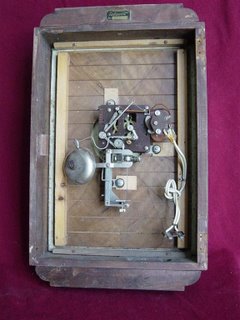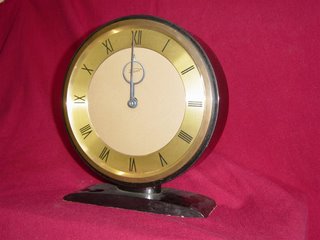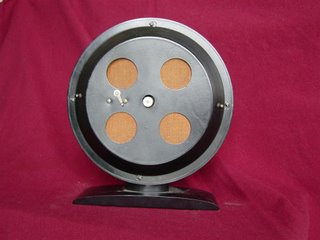
Here is an example of a large, wall-hanging Telavox with striking on a bell. The hinged rear door has been removed to show the movement.
Note the Telavox serial number label at the top of the back of the case. All Telavox clocks have their own serial numbers. As do the movements.
The white battery leads are seen hanging down from the simple electric motor which drives the strike and rewinds the going spring. These wires look like a later replacement. Some of the early clocks show signs of deterioration of the rubber insulation on the original battery wires.
In such a large case there seems to be plenty of room for the movement. Yet exactly the same movement has to fit into this Bakelite drum clock case seen below.

Here is a front view of the typical Telavox dial and hands used on most of their clocks.
Below can be seen the rear of the case. Many Telavox clocks have a round steel backplate which can be easily removed by slight rotation. The keyhole screw-holes in the back plate allow easy removal without tools. Two small protruding knobs (provided for this purpose) are used to gain leverage. Note the strike silencing lever at 9 o' clock. (this is only found here on bell strike models)

This backplate is deeper than most and probably unique to the Bakelite drum models. The wooden case models have a much flatter backplate. Earlier wooden case models had a variety of fibre backplates more typical of old radios. Note the cloth covering the sounding holes to allow the bell strike to be heard clearly.
*
No comments:
Post a Comment